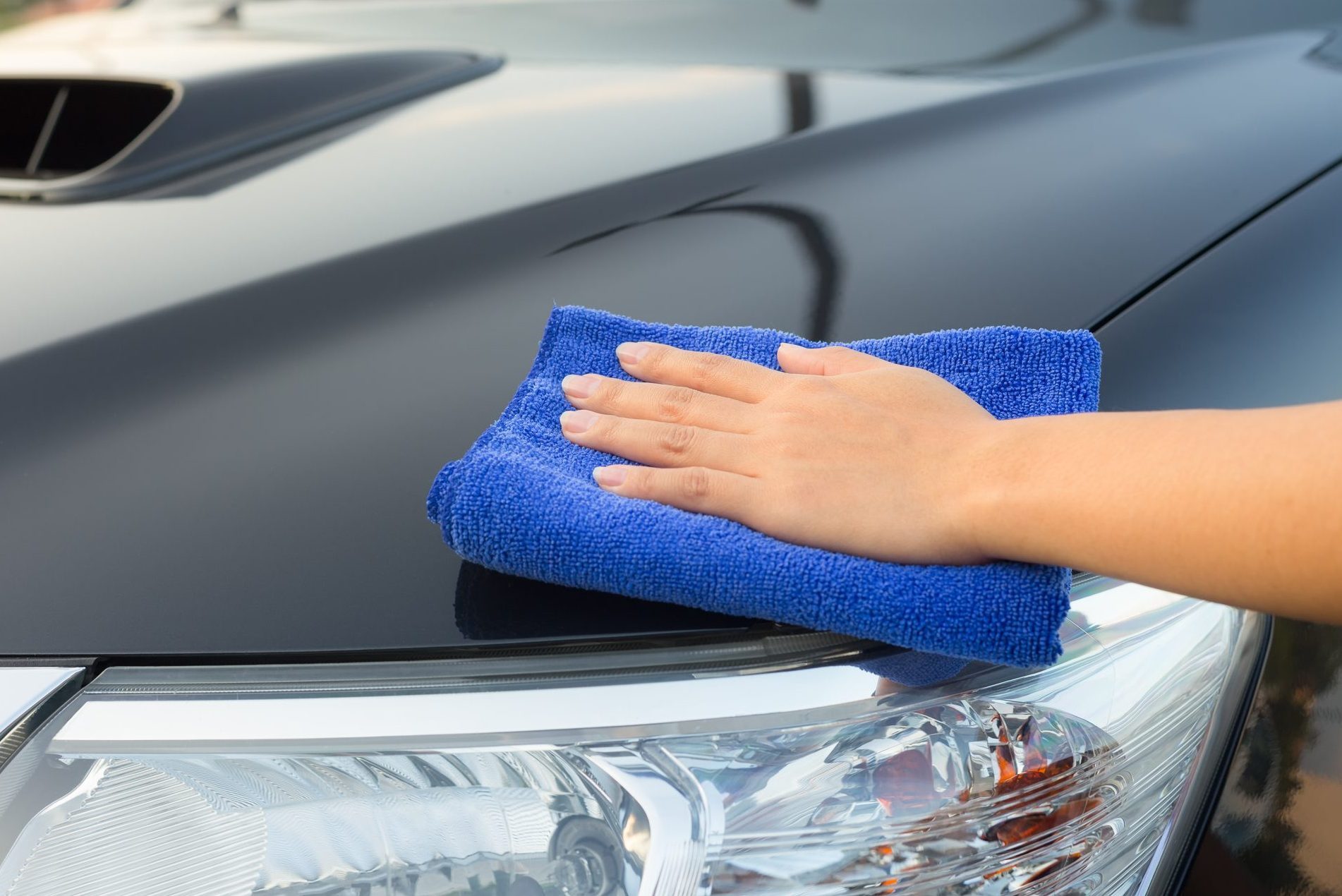Product cleaning instructions more frequently recommend a microfiber towel instead of a soft, clean lint free cloth. Here's why.

Why You Should Use Microfiber Towels

Microfiber towels can hold water like a sponge. That has made them extremely popular, replacing cotton cloths as the “go-to” wipe for house and car care cleaning and polishing.
Positively charged, they also effectively hold dirt like a magnet away from the surface and won’t scratch the finish as you clean or polish. They’re better for cleaning than natural organic fibers like cotton, which push dirt and debris around and scratch the finish. Organic materials can also hold and trap odor-causing bacteria.
Cleaning with just water and a microfiber towel can kill up to 99 percent of bacteria. Non-abrasive microfiber towels work well for dry dusting and washing surfaces without toxic chemicals like bleach or ammonia.
On This Page
Are All Microfiber Towels The Same?
No. Microfiber towels can be made from 100 percent polyester, or an 80/20, 75/25 or 70/30 polyester/reinforced polyamide blend. (Polyamide is a fancy name for nylon.) To be considered a legitimate microfiber, the fibers need to be finer than 10 micrometers (0.01 mm). A human hair is approximately 0.08 mm.
Pro tips:
1. When shopping for microfiber towels, look for ones that are edgeless, or have rolled or silk edges that are microfiber stitched. Towel edges are usually overlooked but can leave scratches behind.
2. To eliminate cross-contamination from previous uses, set up a color coding system for specific purposes — white for glass, blue for applying and removing waxes, green for plastic trim, etc.
Pros And Cons Of Microfiber Towels
Microfiber towels are flexible and versatile. Here are some of their advantages and disadvantages compared to cotton:
Pros:
- Lint free;
- Extremely absorbent;
- Dry quickly, even in colder temperatures;
- Work wet or dry;
- Work on practically any surface;
- Nearly every cleaning job can be done with water and no harsh chemicals;
- Produces little friction, virtually eliminating the possibility of scratching surfaces;
- Machine washable;
- Soft, strong and durable.
Cons:
- Shouldn’t be machine dried. Dryer heat melts or breaks down microfibers.
- Microfibers are synthetic and petroleum-based. Shedding microfibers lead to increased amounts of microplastics entering our lungs and waterways.
What Are The Main Differences Of Microfiber Towels?
Depending on their use (cleaning/scrubbing, washing, applying cleaners or waxes, or polishing), microfiber towels come in different colors, sizes, weights and structures. Some microfiber towels contain up to 200,000 fibers per square inch.
Blends
Polyester fibers are great for cleaning and scrubbing but are less absorbent than the more expensive 70/30 polyester/polyamide blend. Polyamide fibers make microfiber towels softer and more absorbent.
Popular types of microfiber towels
The length, shape and direction of the fibers positioned on a microfiber towel depends on the type of weaving machine that makes it.
Unique fiber structures, characteristics and textures offer several distinctive cleaning properties, making them better for various detailing tasks. A microfiber towel’s “pile,” or the orientation of the fibers on its surface, determine what task it’s best for.
- Terry is a cost-effective, excellent all-purpose cleaning microfiber towel with an absorbent low to medium pile that easily collects dirt and dust.
- Auto detailers prefer two-pile microfiber towels. The low pile on one side is great for cleaning glass, while the high pile on the other side removes dried polish and polishing compounds. Just don’t use the same towels for both.
- Waffle Weave features a cross-hatch pattern instead of a raised pile. The high/low pattern (like a waffle) produces less friction, letting the towel effortlessly glide over the surface. The vertical sides of the “waffle” suck up water. These towels are excellent for drying cars and cleaning glass. For faster cleaning of hard non-painted surfaces like glass, metal and chrome, use a similarly textured low-friction diamond weave towel.
- Chenille, with its thick rolls of long, round microfibers, allows for a sizable surface contact area and easy side-to-side movement, especially when wet. That traps dirt and grime away from finished surfaces. These properties are well suited for car wash mitts and absorbent mats.
- Suede with its extremely low pile is smooth and soft, the perfect weave to clean lenses, hearing aids, laptops, monitors and TV screens.
How To Care For Microfiber Towels
Start by washing your new microfiber towels before using them. Launder them by themselves, in cold water, with one teaspoon of gentle “free” unscented detergent on a normal spin cycle. Do not use any laundry additives, bleach, fabric conditioner or softener. It’s best to air dry microfiber towels outdoors.
If you need to run microfiber towels through a dryer, thoroughly clean the lint filter, set the dryer to the lowest temperature, and don’t add dryer sheets or dryer balls. You can reuse microfiber cloths a few times between laundering. Just rinse well under warm running water and hang dry. Properly laundered and cared for, a microfiber towel can last for years.




















